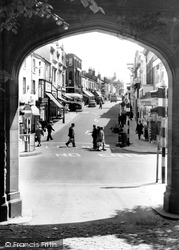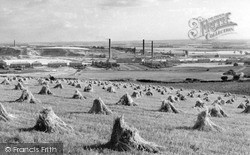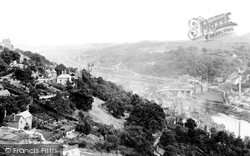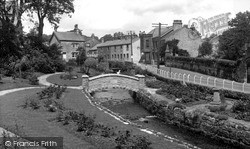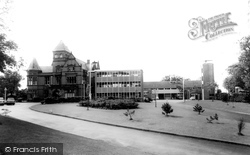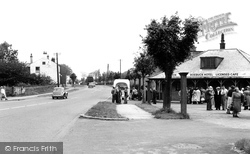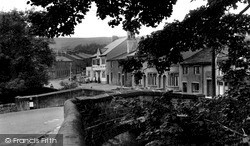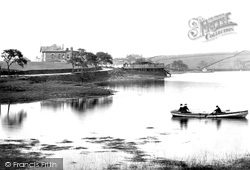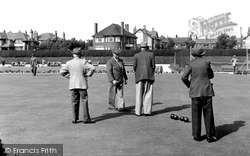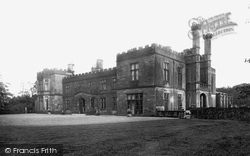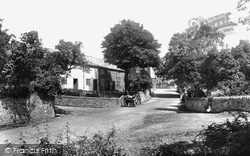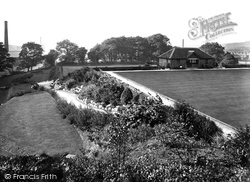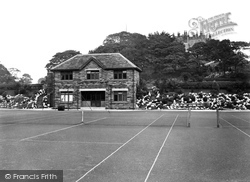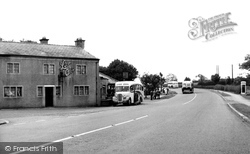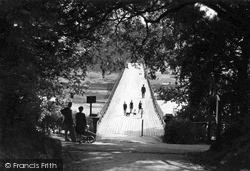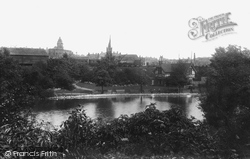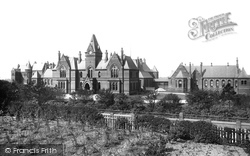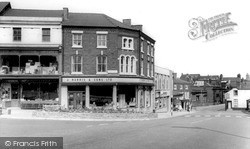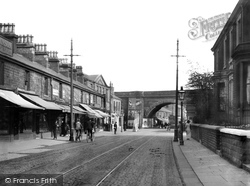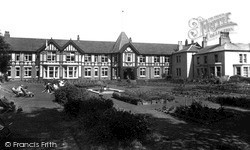Captions
171 captions found. Showing results 61 to 80.
This is Chorley's main street, the A6, Lancashire's main north to south road; it used to get very busy in the summer.
Standing in the upper Douglas Valley, Wigan was once a market town, but by the mid 19th century it was a major centre for Lancashire's coal industry.
Much of the heavy industry had already moved to the Black Country, Lancashire, south Wales etc.
The village of Waddington has won the 'Best Kept Village in Lancashire' title on many occasions.When Queen Elizabeth II came to the throne in 1953, the village erected a Coronation Bridge and laid
Requisitioned by the National Fire Service during WWII, it was eventually bought for the Lancashire Brigade in 1949.
Roebucks are the males of the roe deer, whose herds once roamed this attractive landscape along the western fringe of the Lancashire hills.
Thought to have been used since the Bronze Age, the track through the valley was one of several routes followed by packhorse drivers, who carried goods across the moorland hills between Lancashire
This is the southern or `t`Cheshire side` of the lake, with the roof of the Lancashire & Yorkshire Hotel, which opened on 17 December 1875, just visible in the centre.
Bowls has long been a popular game in Lancashire, and there is considerable rivalry between the many clubs of its towns, villages and pubs.
For a long time even Lancashire was not safe from bands of Scottish raiding parties, and 'Dunkenhalgh' is said to derive from the name of one of the brigands who settled in the area.
The nearby medieval vicarage has a priest hole, often used during the Catholic persecution that followed the Reformation, as this, like many other villages in Lancashire doggedly clung onto the Old Faith
Close by in 1970, on the occasion of the 800th anniversary of the first Charter, celebrations on Saturday 7 August included musical rides and spectacular events staged by the Mounted Branch of the Lancashire
Close by in 1970, on the occasion of the 800th anniversary of the first Charter, celebrations on Saturday 7 August included musical rides and spectacular events staged by the Mounted Branch of the Lancashire
Roebucks are the males of the roe deer, whose herds once roamed this attractive landscape along the western fringe of the Lancashire hills.
Requisitioned by the National Fire Service during WWII, it was eventually bought for the Lancashire Brigade in 1949.
Had the Lancashire, Derbyshire & East Coast Railway had its way, their main line would have run from Warrington to Sutton-on-Sea.
In 1868 Manchester and Liverpool were the only Lancashire authorities with medical officers of health, and as late as 1876 Wigan still lacked a uniform system for disposing of or treating sewage.
The Co-Operative movement began just over the Mersey, in Lancashire, in the 1840s and rapidly spread throughout the industrial heartlands of northern England.
The railway line to Huncoat and Burnley crosses the road here.There was at one time another line down to Rawtenstall, joining what is now the East Lancashire Preserved Railway.As well as having three
On the left are convalescent cotton mill workers; but as mills closed all over Lancashire, the building closed as a convalescent home and was bought by Wyre Borough Council to be their Civic Centre—it




